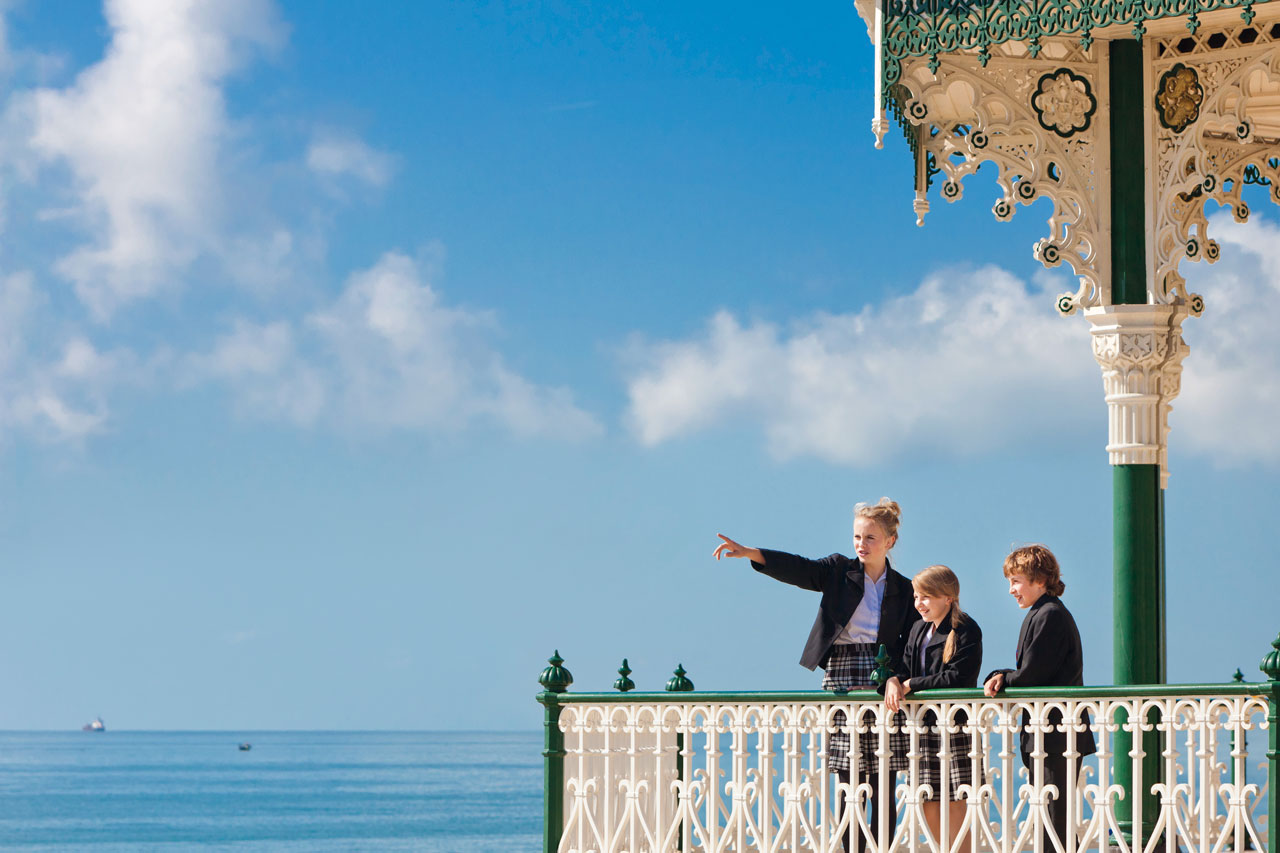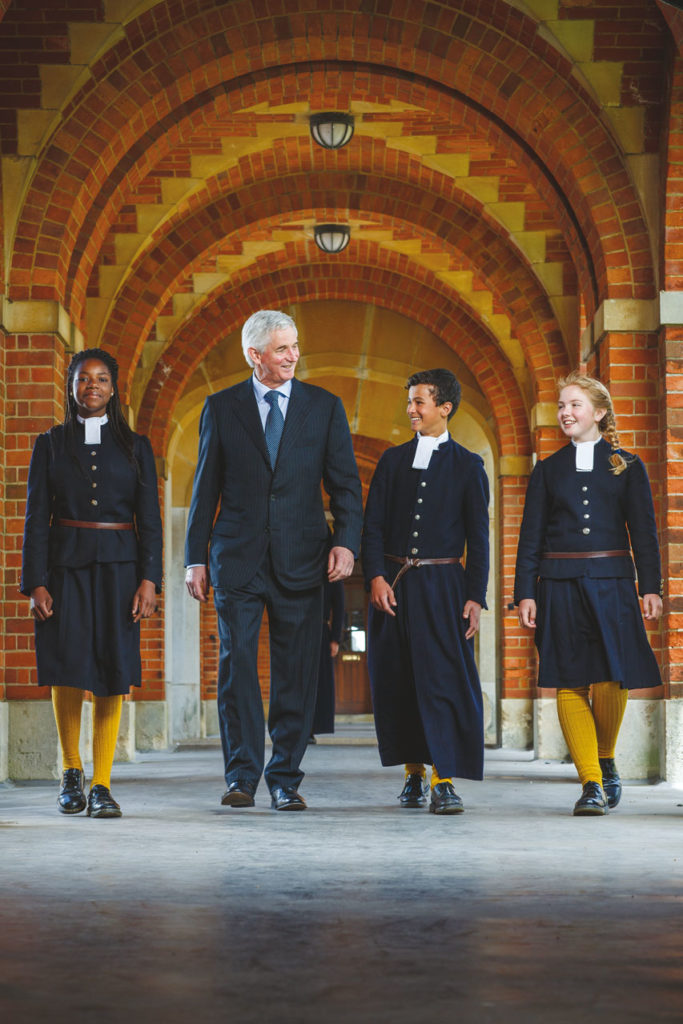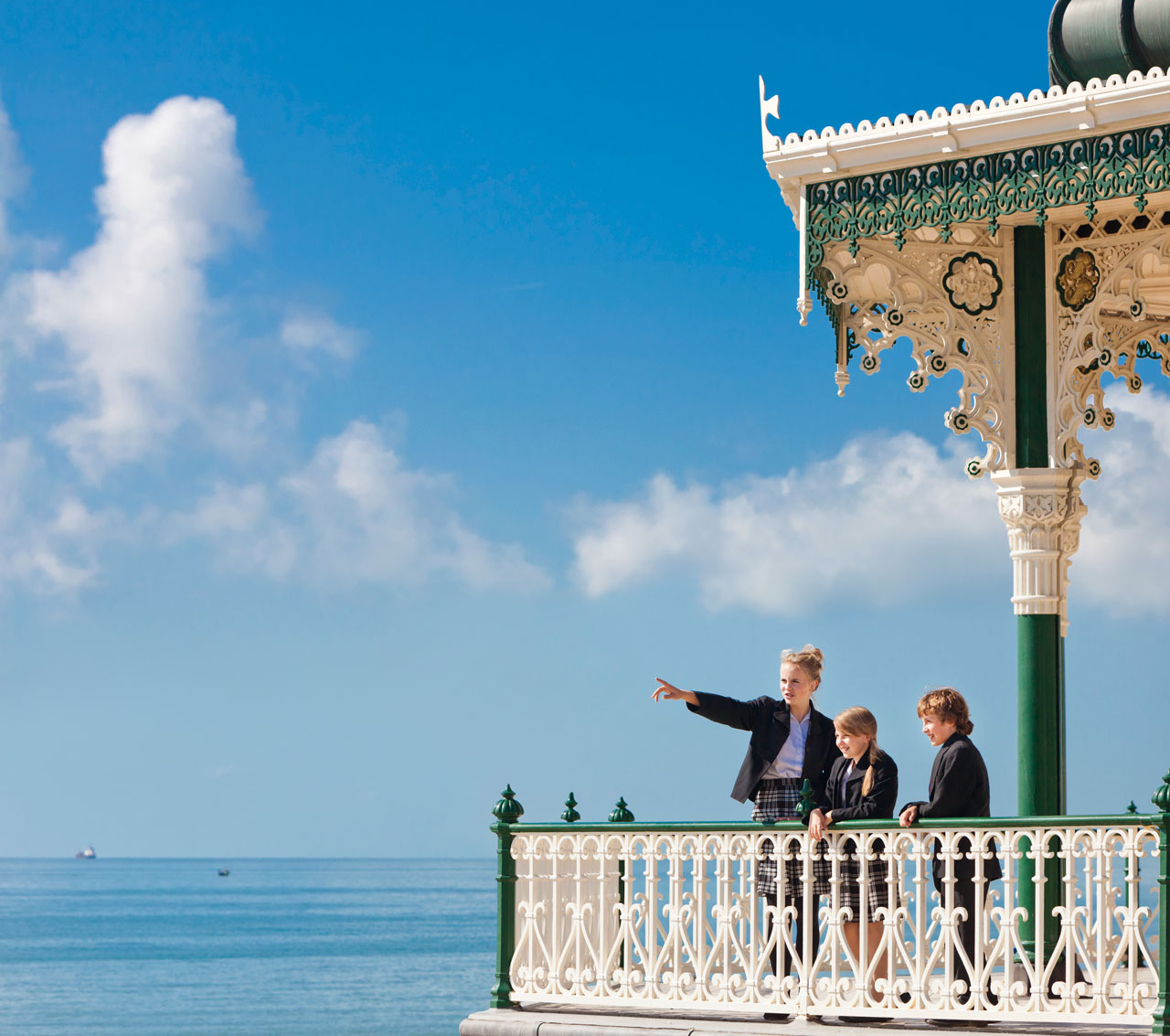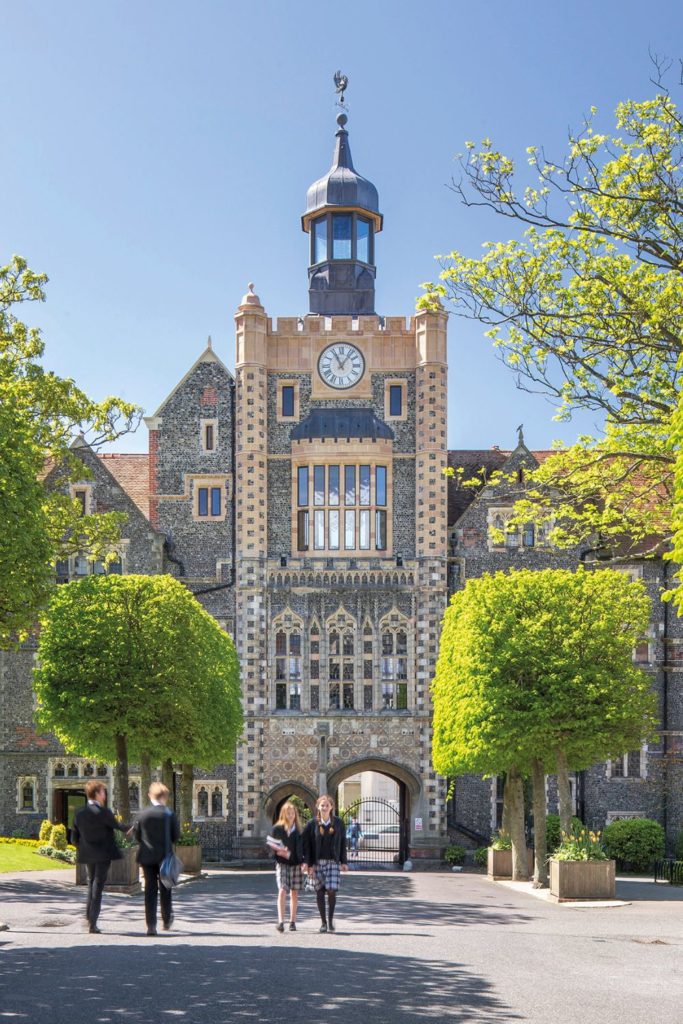Balancing the Books: School Fees Explained
By
8 years ago
Sally Jones finds out how schools manage their budgets in cash-strapped times

With average boarding school fees tipping £30,000 a year, and some well above, the affordability debate intensifies. Parents stare at Excel sheets wondering how they will manage the fees, but bursars are faced with an equally challenging job of running a school on an income of 30-odd thousand multiplied by x number of pupils.
Privately, bursars of even big-name schools admit that balancing the books has become an increasingly difficult tightrope act. Many of these independent schools were originally set up as charities to provide public benefit by educating bright poor children, but their charitable status places further demands on their funds as they are expected to show just cause for the accompanying tax concessions. For some, this is just a step too far.
Despite the popular image of public schools as all manicured lawns and gracious quadrangles populated by Lord Snooty and his pals, there are significant disparities between different schools’ endowments. A few smaller struggling establishments have given up the fight and have closed down or become free schools or academies.
The Charity Commission’s threat to strip charitable status and associated tax savings from schools has exacerbated the trend. But a 2011 legal challenge from the Independent Schools Council (ISC), which represents 1,300 senior schools, 1,000 of them charities, forced the Commission to confirm education as a charitable activity. This means trustees decide how to demonstrate public benefit.
‘It’s a perception issue,’ says Barnaby Lenon, ISC chairman and former Harrow headmaster. ‘Politicians and most of the public think it’s wrong that expensive, well-endowed schools should have charitable status, but many are fulfilling their duties admirably, educating thousands of children from low-income homes. One shining example is Christ’s Hospital – virtually all their pupils are on reduced places – while Eton set up a state school in Maidenhead, supports the London Academy of Excellence and runs around 100 projects involving Slough and Windsor state schools.’
Independent schools educate around 520,000 children saving the state about £3bn a year as estimated by the ISC. Means-tested bursaries and scholarships averaging £9,000 a year and granted to 40,000 children from lower income families, constitute a public benefit of £380m. Forty per cent of those on means-tested bursaries have half their fees remitted.
A handful of ancient establishments such as Eton, Winchester and the Whitgift Foundation (including Trinity, Whitgift and the Old Palace of John Whitgift School) dominate the ‘premier league’ of financial provision thanks to endowments and donations from grateful alumni. Eton spends £6.5m a year on bursaries and scholarships and 21 per cent of its pupils receive financial help, including the 75 boys on full fees. Its ‘new foundation scholars’, gifted boys from state secondaries, are the modern-day equivalent of the ‘70 poor scholars’ for whom Henry VI founded the school in 1460. Whitgift schools spend £5m a year on bursaries with 45 per cent of pupils on fee assistance.
It is Christ’s Hospital, however, which stands head and shoulders above the rest, 465 years after being founded to educate and house needy children. Thanks to its links with the City of London Corporation, plus generations of philanthropic alumni known as Old Blues, it enjoys a whopping endowment of £330m, raises £4m a year in donations and spends £16m in bursaries. Its charitable purpose remains unchanged; many of its 860 pupils come from dysfunctional backgrounds, including families affected by illness and addiction, while several bright children come from the care system. Thirteen per cent qualify for free school meals and almost 75 per cent receive financial help. Fourteen per cent are fully supported and 40 per cent pay less than ten per cent of fees. The school’s income is boosted by overseas students paying fees of £33,300 a year.
With staff salaries of £13m and extensive buildings on a 250-acre Grade II* listed site, which costs £6m a year to maintain, managing Christ’s Hospital is ‘like running a small city’, says Greg Andrews, chief executive of the school’s foundation. ‘The livery companies and traditional supporters are generous donors,’ he says, ‘but 80 per cent of our fundraising comes from alumni. Many came from nothing and Christ’s Hospital gave them a chance in life so they feel a high moral compulsion to give back.’

Seventy five per cent of Christ’s Hospital pupils receive financial aid
John Claughton, former chief master of the highly academic King Edward’s School, Birmingham, raised £10m for bursaries and £8m for capital projects in under seven years. An Old Edwardian, he has an understanding of the school’s great past and links with other successful alumni, including novelist Jonathan Coe, former universities minister Lord Willetts and Sir Paul Ruddock. These were important factors in funding projects like the £10m performing arts centre shared with sister school King Edward VI High School for Girls (KEHS), whose alumnae include actress Lindsay Duncan and newsreader Reeta Chakrabarti.
KEHS recently held a reception at the House of Lords to launch an appeal to raise £3.7m to fund the education of more gifted girls from ordinary backgrounds and to provide assisted places for a quarter of their pupils
by 2020. Mr Claughton is strongly aware of the north-south divide. ‘The prosperity of London and the South East, with the concentration of talent and global capital, allows top schools there to thrive,’ he says. ‘Thirty-five years ago, five of the ten best independent schools, were north of Oxford. Now there’s only a handful north of Oxford in the top 50. Thankfully, KES is one of them.
‘The issue is affordability. Economic decline means fewer parents can afford the fees. Scrapping the direct grant system and the government’s assisted places scheme in 1997 removed many able students. To redress the deficit, former direct-grant schools like Manchester Grammar and King Edward’s started raising money themselves. They are well-placed to do so because, like Christ’s Hospital, their alumni want to give something back. Donating is paying school fees a generation later, giving another child the chance we had.’
Other well-known schools relying heavily on alumni donations take a similar line. Oundle, one of the few remaining full boarding schools outside the South East, has no history of financial endowment. Since 2000, however, it has raised a £11.1m fund to contribute to the £2.8m it spends each year on bursaries and scholarships. ‘Our bursaries include 28 full fees places, not for boosting recruitment, but for fulfilling our charitable aims and widening access,’ says development director Matthew Dear. ‘We are blessed with successful alumni who want to help us and we try to keep close personal contact with events bringing them together.’
Unlike some of its rivals, the school keeps its percentage of overseas students relatively low at around 25 per cent, including British ex-pats. ‘It’s a question of identity,’ says Dear. ‘It’s important to have a diverse range of international pupils contributing to the school’s cultural life but to keep our identity as a British boarding school with a global outlook.’
The distinctive brand of Repton, the imposing Derbyshire boarding school and its prep school Foremarke Hall, has opened up opportunities abroad. ‘It’s a tough climate,’ admits headmaster Alastair Land, ‘and we’ve capped fees to address affordability.’
Many more pupils starting out as full fee-payers are leaving with bursaries owing to changes in family circumstances. ‘We rely on endowments to support students from all backgrounds who might benefit from
a Repton education and established international schools, starting with Repton Dubai in 2007 to raise bursary funds for Repton UK. Four are operational; three more are in the pipeline.’
Several schools, notably Harrow, Marlborough, Malvern, Sherborne and Dulwich, have also gone down the international route, taking advantage of their respected names and core values to form lucrative franchise partnerships with educational investors overseas. Schools in the Middle East, India and China have been set up and injected with their ‘educational DNA’, along with their name, with advice on staff recruitment, governance, quality assurance and of course, the widely admired British curriculum.
Brighton College, currently rated England’s top co-ed school on the Sunday Times ‘Parent Power’ list, is partnering three award-winning schools in the UAE and Bangkok which generate income, boosting its bursary fund and mission to broaden access for charitable purposes in the UK.

Brighton College sets its sights on investments overseas
Efficient financial management, corporate sponsorships and extensive alumni donations have helped to fund projects including its £37m state-of-the art combined sports and science centre and its partnership with the London Academy of Excellence.
‘The key for schools like ours is to identify their core business and focus on the quality of teaching,’ insists bursar and deputy head Paul Westbrook. ‘You can’t compromise on academic quality or parents won’t value the school. We’re hugely proud of our high “value-added” scores too which are crucial to our success.’
This advice was echoed universally. Regardless of endowment size, selectivity or reputation, only the most focused, efficient schools that stay true to their charitable roots and deliver a rich, authentic educational experience with high added value can expect to thrive in an unpredictable economic climate.
HOW SCHOOL FEES ARE SPENT:
Assuming an average annual boarding school fee of £30,000, the amount per pupil spent on the different aspects of education and accommodation (an average figure which reasonably represents the norm)
£10,500 – Teachers’ salaries
£5,100 – Welfare, including boarding and accommodation
£5,400 – Premises costs, including utilities
£3,000 – Admin, including IT
£4,200 – Capital projects
£1,800 – Per pupil on academic and co-curricular resources
This article was originally published in the autumn/winter 2017 issue of School House. All facts were correct at the time of print.
READ MORE: The Charitable Status Debate | How Schools Are Giving Back to the Community






